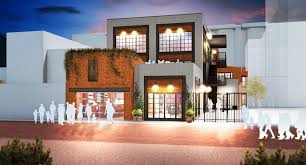“Respect” finds a home in DC alleys
Several years after the blog “Preserving DC Stables” was launched (2008), the author and two of his fellow preservation colleagues (Orestes Del Castillo and Phyllis Klein) met with several members of the Office of Planning - Ms. Harriet Tregonning, Mr. David Maloney and Ms. Jennifer Steingasser - to discuss how stables and other buildings in DC alleys were being destroyed. An entire culture was evaporating under the jackhammers of developers. We also discussed the adaptive reuse of buildings and alleys, national trends, the greening of alleys and the large number of named alleys with intact stables in DC. After an hour of presentations and discussion, Ms. Tregonning seemed rather puzzled and said, “I don’t understand. Everyone who comes here wants something. What do you want?” The author addressed her question with one word - “respect.” She nodded in appreciation and understanding. The hard work was just beginning.
A few years later, a photo-journalistic project documenting DC alleys was launched under the fastidious leadership of Kim Williams, (Architectural Historian/National Register Coordinator, DC Historic Preservation Office). The project grew and evolved over several years using HPO staff and an army of six student interns and four volunteers. While a project of this nature is always “alive” and in some senses never completely finished, it has resulted in a large body of work, some of which is highlighted in their beautiful 2014 publication. https://planning.dc.gov/sites/default/files/dc/sites/op/publication/attachments/Alley%20Survey%20FINAL.pdf
 “The D.C. Historic Alley Buildings Survey is an extensive and on-going survey of the city’s historic alley buildings that began in the Spring of 2011. The survey is being conducted by the D.C. Historic Preservation Office (HPO) with the assistance of volunteers and student interns. The boundaries of the survey were defined to include all of the alleys within the city’s designated historic districts, located within and just beyond the original L’Enfant Plan (the “Old City”). Phase 1 of the survey comprises all of those alleys located in the city’s northwest quadrant historic districts, including Georgetown, while Phase 2 of the survey consists of the Capitol Hill Historic District. Subsequent phases will expand the survey work to other historic districts outside of the original city limits and to areas not designated as historic districts known to have notable collections of alley buildings. Although the survey project is still on-going, Phase 1 and 2 have been substantially completed and its findings have been compiled in this report."
“The D.C. Historic Alley Buildings Survey is an extensive and on-going survey of the city’s historic alley buildings that began in the Spring of 2011. The survey is being conducted by the D.C. Historic Preservation Office (HPO) with the assistance of volunteers and student interns. The boundaries of the survey were defined to include all of the alleys within the city’s designated historic districts, located within and just beyond the original L’Enfant Plan (the “Old City”). Phase 1 of the survey comprises all of those alleys located in the city’s northwest quadrant historic districts, including Georgetown, while Phase 2 of the survey consists of the Capitol Hill Historic District. Subsequent phases will expand the survey work to other historic districts outside of the original city limits and to areas not designated as historic districts known to have notable collections of alley buildings. Although the survey project is still on-going, Phase 1 and 2 have been substantially completed and its findings have been compiled in this report."
Over the last decade, DC alleys have come alive again. They have grown from being places where cabs were afraid to go, to Uber destinations.
Physical space for development in Washington is disappearing rapidly. Eyes are turning to alleys, as incompletely tapped opportunities to capitalize on existing small buildings like stables and shops and former auto-repair places as accessory dwelling units, affordable rental or ownership properties and small businesses. While this is exciting, it is important to caution that the “sense” of an alley should not become overwhelmed by unbalanced enthusiasm as has occurred in some of Toronto’s alleys (graffiti alley).
DC alleys offer a refreshing alternative to the anodyne landscape of many of DC’s city streets, now lined with rows of unimaginative giant filing cabinets that “meet code” by build and “meet design standards” of various boards so precisely that they are in many instances, almost identical. Stepping into an alley where the little buildings are morphing into yet another life, can be invigorating and brings one back to a more human scale of architecture, space, and purpose.
Thank you, Jane Jacobs.
https://raphnogal.com/blog/water-balloon-fight-engagement-session-sarah-matt-graffiti-alley-toronto/




No comments:
Post a Comment